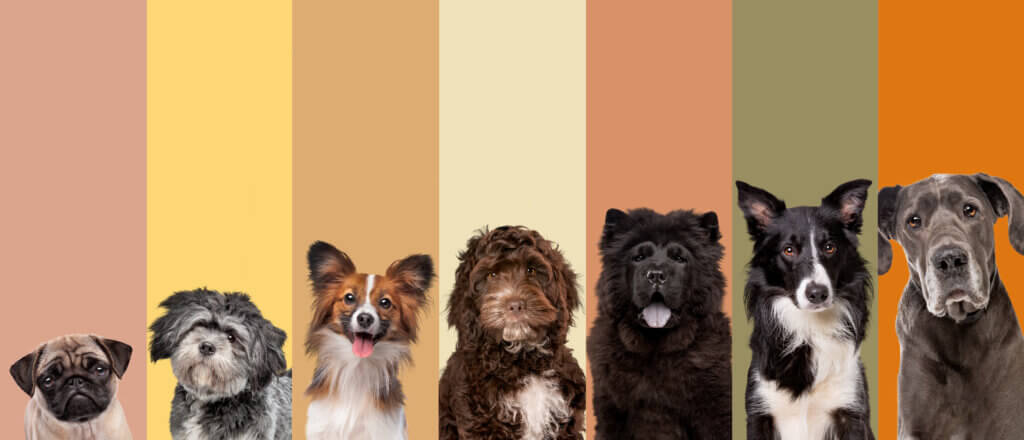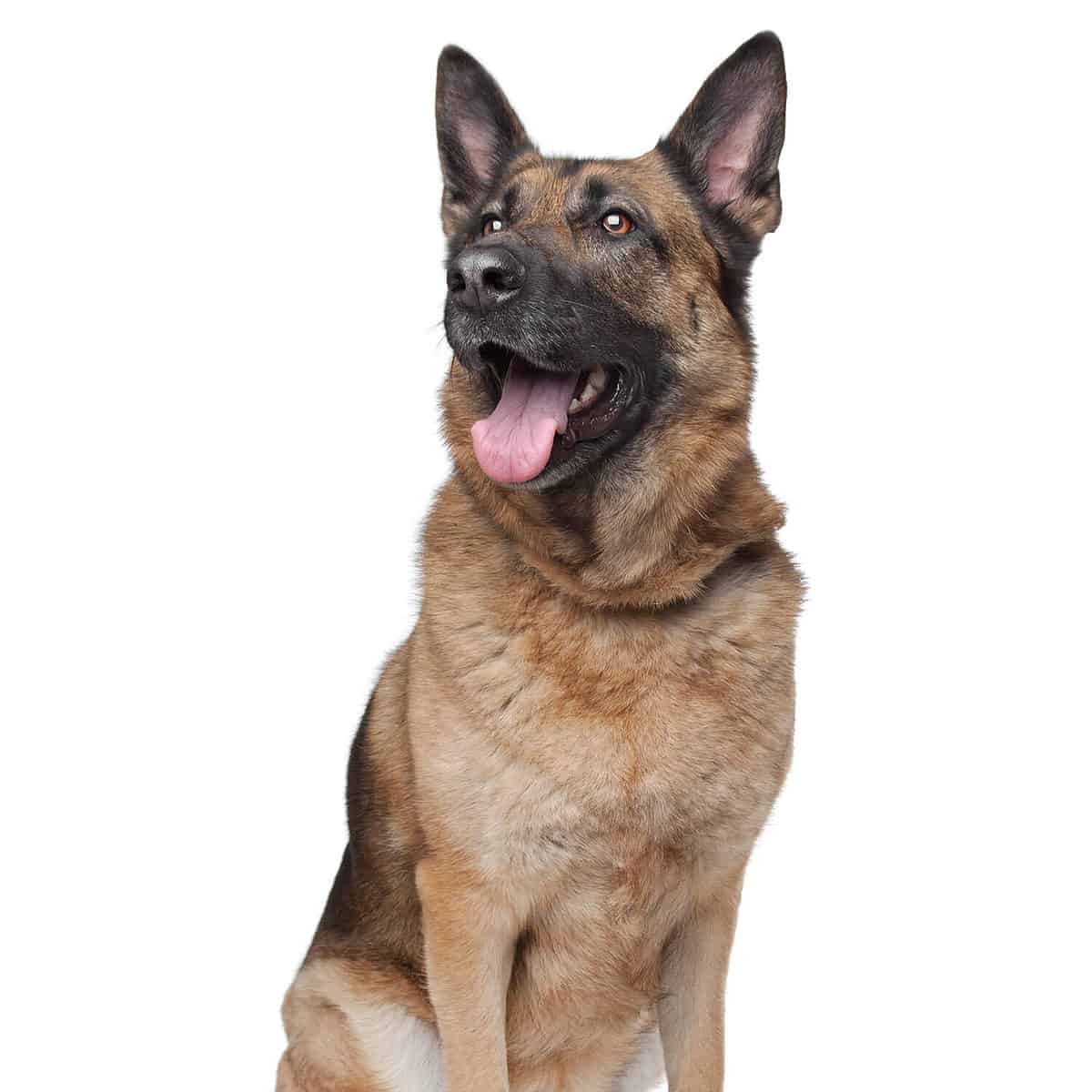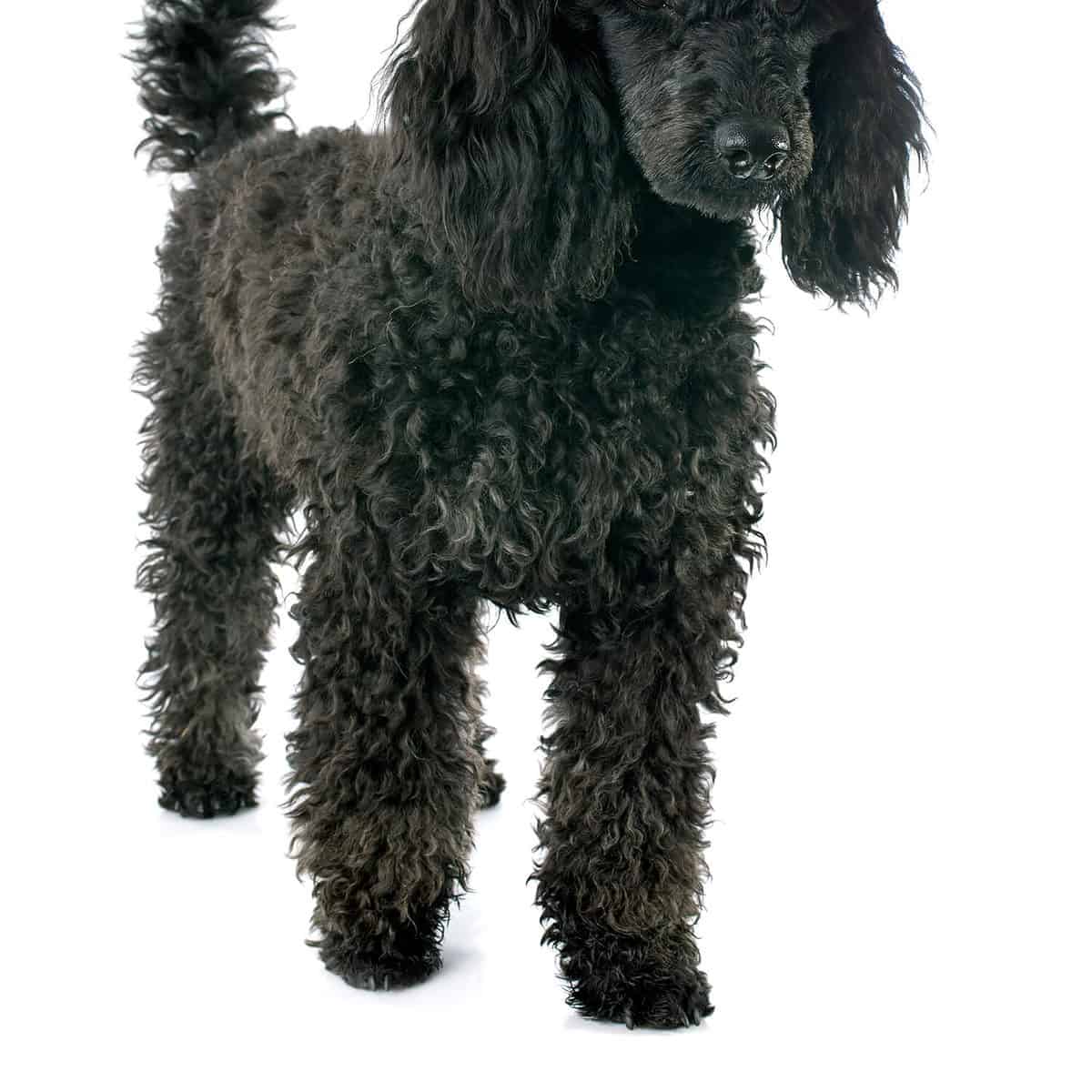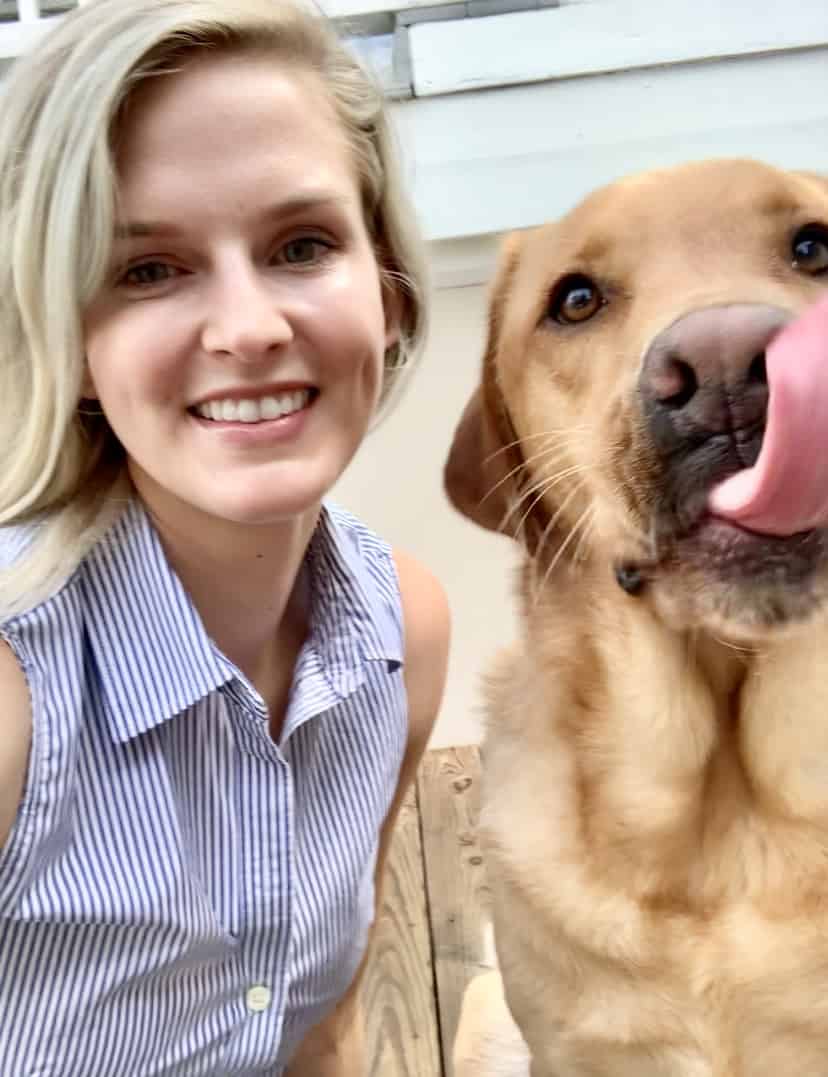
Dogs are fascinating creatures with a vast span of characteristics both physical and with personality. From the smallest to the largest breeds each has their own unique set of physical characteristics. Additionally, they have unique personality characteristics that, through years of breeding, have become as ingrained in their behavior as their physical characteristics. These traits help potential dog owners when researching what breeds will best accommodate them and their lifestyle.
Current owners can gain insight and a better understanding of their dogs habits, behaviors, and health by researching their breed or breeds (if a mixed breed). This blog explores the 10 most popular dog breeds along with breed information such as characteristics, grooming, behavior, and health considerations. Is your dog one of the most popular breeds?

Labrador Retrievers can weigh anywhere from 55 to 80 pounds, and their life expectancy is 10 to 12 years. Their typical colors are yellow, black, and a deep chocolate. Labs are a sporting breed meaning their build is typically quite sturdy. Labrador Retrievers are a companion breed, they are friendly and eager, love to socialize with humans and other dogs, and are energetic. Labrador Retrievers are athletic and require lots of exercise and activity to maintain their physical and mental health.
Labrador Retrievers do best when served high quality dog food. They have a moderate inclination towards being overweight. Labs have a thick, water-repellent double coat that sheds a lot, but only requires the occasional bath. Labradors are eager to please, making them fairly easy to train.
Health Considerations: Labrador Retrievers can be prone to elbow and hip dysplasia, and bloat. Some younger labs can have a condition called exercise induced collapse (EIC) but this is genetic and can be tested for.
Learn more about the Labrador Retriever here.

French Bulldogs can weigh up to 28 pounds and have a life expectancy of 10 to 12 years. They are considered to be adaptable, alert, and playful. French Bulldogs are often considered the miniature of the Bulldog in all aspects of appearance except for their large bat ears that stand straight up. French Bulldogs are especially popular among city dwellers. This is because their highly alert nature makes them excellent watch dogs, while their playful and friendly nature, combined with their adaptability, makes them excellent for all types of owners (singles, couples, families with children).
French Bulldogs are low energy and don’t require a lot of space for play or long walks (another reason they are an excellent fit for city life). French Bulldogs require high quality dog food that is appropriate for their life stage. French Bulldogs are prone to obesity and it is recommended they receive treats in moderation; avoid foods and treats that are high in fat. French Bulldogs have a short coat that sheds minimally and requires only the occasional bath. However, due to their folds, especially on their face, it is recommended their face folds be cleaned regularly.
Frenchies should only be taken on shorter walks to allow for adequate exercise. As a flat-faced breed they can be prone to breathing difficulties and it is recommended they not be permitted to overexert themselves, especially in hot or humid weather. They are agreeable to training and do best with obedience, agility, and rally.
Health Considerations: French Bulldogs cannot swim due to their front-heavy weight distribution. For this reason they should not be left unattended near water. Frenchies can be prone to breathing difficulties because of their shorter snout and should not be allowed to overexert themselves in walk or play. French Bulldogs can have eye conditions such are juvenile cataracts, entropion, or a condition called “cherry eye,” which is a redness and/or swelling of the third eyelid. French Bulldogs are also prone to skin allergies and autoimmune skin disorders.
Learn more about the French Bulldog here.

German Shepherds can weigh between 50 to 90 pounds and have a life expectancy of 12 to 14 years. They are a herding breed and are considered loyal, smart, confident, and courageous. German Shepherds are often considered a working dog due to their steadfast and protective nature towards those they are loyal to. German Shepherds are kind and loving to their family but can be aggressive if their family is threatened.
German Shepherds require high-quality dog food with adequate vitamins and minerals. German Shepherds have a medium length double coat. Their top layer is more dense while their under layer is softer, and they shed moderately. German Shepherds are a very active breed and require lots of exercise. If they do not receive enough exercise they can become frustrated and develop undesirable behaviors.
German Shepherds are very eager to please and easy to train, they prefer training activities such as herding, agility, and tracking. They prefer a reward based training program with positive reinforcement. German Shepherds are highly intelligent and like having consistency.
Health Considerations: If cared for appropriately and given the proper diet, German Shepherds live healthy lives without many issues. They are prone to elbow and hip dysplasia, like many large breeds, as well as bloat.
Learn more about the German Shepherd here.

Golden Retrievers can weigh anywhere from 55 to 75 pounds, and their life expectancy is 10 to 12 years. Golden Retrievers are sporting dogs and are serious workers when hunting or in field roles such as guide dogs or search-and-rescue. Golden Retrievers are considered muscular, medium-sized, and sturdy. Golden Retrievers are considered devoted creatures with a friendly and intelligent demeanor. They are outgoing and trustworthy of both people and most other animals. They make excellent companions and family dogs as they are friendly with people of all ages.
Golden Retrievers are often used for hunting, especially waterfowl, which makes running, fetching, and swimming some of their favorite activities. Goldens require high-quality dog food appropriate for their life stage. Some goldens can become overweight so it is important to monitor and balance treats with activity. Golden Retrievers have a signature long coat that is thick and water-repellant. Their double coat sheds regularly but most prominently once or twice a year (typically with seasonal changes).
Golden Retrievers require weekly brushing to maintain their coat and frequent to occasional bathing. Golden Retrievers require lots of activity including daily exercise such as agility, tracking, or obedience. Goldens are exceptionally friendly creatures and their eagerness to please nature makes them easy to train.
Health Considerations: Golden Retrievers are generally healthy, however, they are prone to elbow and hip dysplasia; eye conditions such as progressive retinal atrophy, pigmentary uveitis, juvenile cataracts; and heart diseases such as aortic stenosis. Golden Retrievers should be checked regularly for infection (especially of the ears) and their teeth should be brushed often.
Learn more about the Golden Retriever here.

Bulldogs can weigh between 40 to 50 pounds and their life expectancy is 8 to 10 years. Bulldogs are considered to be friendly and docile dogs. They are short in stature; their signature scrunchy face is often perceived as “angry” or “mean.” Bulldogs are very friendly and loyal companions who often try to snuggle with their owners. Bulldogs require moderate exercise and a watchful eye on diet help to ensure they stay trim.
Bulldogs should have a balanced diet with high-quality dog food. Some Bulldogs can become overweight so it is important to watch treat intake and balance it with their activity level. Bulldogs have a short coat that requires frequent brushing, 2 to 3 times per week, with a soft brush. They shed regularly and their many folds require frequent cleaning to avoid skin issues. While Bulldogs are often mellow and spend much of their time seated at their owners feet, they also enjoy regular walks.
Bulldogs have a shorter snout which can make breathing difficult, especially in heat and humidity. Because of their front-heavy and muscular build, combined with their shorter legs Bulldogs should not be left unattended near water. Stairs are also a safety hazard. Bulldogs are fairly agreeable with training and their playful behavior includes chewing and tug-of-war. Some Bulldogs can be protective of their food, training while a puppy can help to mitigate this.
Health Considerations: Overheating is a major consideration for Bulldogs as they are prone to overheating quickly. Some other considerations include heart conditions and tracheal hypoplasia.
Learn more about the Bulldogs here.

Poodles weigh between 40 to 70 pounds and their life expectancy is between 10 to 18 years. Poodle temperament is proud, active and smart. There are three size varieties: standard (over 15 inches tall at the shoulder), Miniature (max 15 inches tall at the shoulder), and Toy (max 10 inches tall at the shoulder). Poodles require a high protein diet and some can become overweight, although this is irregular due to their high activity levels.
Poodles are very active and require regular exercise. They enjoy all types of activity from swimming, to walks, to fetch and more. Poodles are highly intelligent and are easily trained. They were originally bred as hunting dogs so they have a high “fetch” impulse and do well with training activities in which they find and retrieve. Poodles are very eager to please their wonder and do well with agility, obedience, and tracking. They respond best to positive reinforcement and prefer consistency.
Poodles require a lot of grooming, mostly specialty grooming and professional level skills. Their coat is prone to matting and requires daily brushing to prevent this. If poodles are not groomed regularly and their fur becomes matted they will need to be shaved. Professional grooming is recommended every four to six weeks to maintain your poodle’s coat. Poodles do not shed frequently, making them an excellent choice for people with allergies.
Health Considerations: Depending on the size, some poodles are more prone to issues than others. Miniature and Standard Poodles are more likely to develop hip dysplasia, whereas Miniature and Toy Poodles are more likely to develop Legg-Calve-Perthes or luxating patella. Other conditions seen in Poodles include sebaceous adenitis, von Willebrand’s disease, idiopathic epilepsy, and immune-mediated disorders. Standard Poodles are more at risk for gastric dilation with bloat.
Learn more about the Poodle here.

Beagles weigh between 20 to 30 pounds and have a life expectancy of 10 to 15 years. Beagles are known for being friendly and curious. They are a hunting dog and were bred to hunt in packs so they often grow attached to their humans, other dogs in the house, and especially other Beagles. Beagles come in colors like yellow, red and white, and tricolor.
There are two types of Beagle: those that stand under 13 inches at the shoulder, and those that stand between 13 and 15 inches at the shoulder. Beagles, while small in stature, are solid and sturdy. The signature characteristics of a beagle are their longer torsos, somewhat like the Dachshund, and their long, droopy hound ears. Beagles are loving, friendly, and companionable.
Beagles are energetic creatures and like lots of play time. They require at least an hour of exercise each day, especially walks. Beagles love company, if left alone they can develop destructive behaviors. Beagles are also known for being quite good at escape and require a tall fence. Beagles are very scent motivated and training that incorporates scent can be very mentally stimulating for them. This also means they must be kept on a leash when outside otherwise they may run off.
Beagles can be prone to becoming overweight and must be given teats sparingly or balanced with exercise. Beagles have smooth and dense fur that becomes heavier in winter. They shed moderately with the bulk of shedding occurring in spring. They require weekly brushing but only need bathed on occasion, more frequently should they decide to take up a digging expedition.
Health Considerations: Beagles can be prone to hip dysplasia, hypothyroidism, luxating patella, epilepsy, and eye disorders. Because of their long, drooping nature, Beagles can also be prone to infections of the ear and their ears should be checked regularly.
Learn more about the Beagle here.

Rottweilers can weigh between 80 to 135 pounds and their life expectancy is between 9 to 10 years. Rottweilers are part of the working group of dogs. Their temperament is loyal, fiercely loving, and confident. They are a robust build and are descended from the Roman Mastiff. Rottweilers are protective of those they love and, while a playful creature at home, will switch to a protector should they see anything or anyone as a danger.
Rottweilers often observe the world around them with a sort of aloofness that belies their protective, working nature. Rottweilers have a shiny black coat with brown markings. Their build is strong and they have muscular hindquarters. Rottweilers are confident and calm, especially when trained well. They are often reserved with strangers and do best when trained through social interaction, and leadership.
Rottweilers are social dogs when they are with their owners, they do not like isolation or being left alone. They can be trained easily if given a model of trust during training. They want consistent, fair, and firm training methods with positive reinforcement. Rottweilers require regular exercise and enjoy herding, swimming, tracking, and long walks. Rottweilers have a medium length coat that sheds seasonally, and requires moderate bathing and grooming.
Health Considerations: Rottweilers, like most large breeds, are prone to hip and elbow dysplasia. They may also potentially have a malformation of the hip joint. Other concerns include eye disease and heart conditions, as well as cancer. It is recommended that Rottweilers maintain a careful vaccination regimen in order to prevent cancer and promote longevity. Another consideration is to keep a Rottweiler (both male and female) intact until they reach six (6) years of age..
Learn more about the Rottweiler here.

German Shorthaired Pointers weigh from 45 to 70 pounds and their life expectancy is between 10 to 12 years. Pointers are of the sporting group which means they are excellent hunting and sporting dogs, and require lots of exercise, especially running. Pointers are smart, friendly, and willing to please. As a medium breed, they are versatile and enthusiastic dogs who enjoy vigorous exercise and attention.
German Shorthaired Pointers (GSP) have a distinctive coloring pattern with a solid brown head and rear with a spotted body. Pointers are known for speed, power, agility, and endurance. They enjoy long walks, running, swimming, and sporting activities. Pointers are eager to please which makes training easy, especially since they do well with positive reinforcement. With a strong prey drive, it is important to know they will need close supervision if off leash, even in a fenced yard.
Because of their high level of activity, GSPs under 6 months of age will require feeding more than twice per day. In adulthood, twice per day is typically enough, however, it is dependent on activity level. GSPs have a medium length coat that sheds regularly and should be brushed weekly.
Health Considerations: Generally speaking, German Shorthaired Pointers are healthy due to their high level of activity. They are prone to hip and elbow dysplasia, eye conditions, and heart disease. One other consideration is this breed is prone to bloat.
Learn more about the German Shorthaired Pointer here.

Dachshunds weigh no more than 32 pounds and their life expectancy is 12 to 16 years. Dachshunds are of the hound group and are spunky, curious, and friendly dogs. There are two types of Dachshund: the Standard weighs over 16 pounds and stands no taller than 9 inches, whereas the Miniature weighs under 11 pounds and stands no taller than 6 inches. Dachshunds are most commonly known for their small stature and long, tubular bodies, not unlike a hotdog, hence the name “weiner dog.”
Dachshunds are bold and vivacious with large personalities. Because of their size and short legs, they are not particularly active dogs in terms of swimming, leaping, and running. However, they are active in terms of walking and tend to be rather tireless. They are smart and vigilant dogs with a protective streak. They also have a large bark, one that seems unbelievable for such a small dog, this comes in handy should they feel the need to be protective.
Dachshunds come with one of three types of coat: smooth, wirehaired, or longhaired. Regardless of the type of coat they shed on occasion, however, the longer and more coarse (wirehaired) their coat the more brushing they require for maintenance. Dachshunds are intelligent but can be stubborn when it comes to training. They do best with positive reinforcement and reward-based training. Dachshunds are sensitive and do not react well when given harsh punishment.
Dachshunds can easily become overweight so it is critical they only receive the recommended amount of food during feeding. Their treats should be strictly monitored and balanced with their activity to prevent becoming overweight. Dachshunds are loving and loyal and want to spend all their time with their companions and humans.
Health Considerations: With proper nutrition and care, Dachshunds can live a long, happy life. One main concern with the Dachshund is back injury. Another concern for Dachshunds is ear infections, this is because of their long, droopy ears which can trap moisture.
Learn more about the Dachshund here.
Other Breeds
Did your dog crack the top ten? No? What about the top 20? We listed the 20 most popular dog breeds below, however, the American Kennel Club ranked 195 dog breeds which you can explore here to find where your dog ranks.
- Labrador Retriever
- French Bulldog
- German Shepherd
- Golden Retriever
- Bulldog
- Poodle
- Beagle
- Rottweiler
- German Shorthaired Pointer
- Dachshund
- Pembroke Corgi
- Australian Shepherd
- Yorkshire Terrier
- Boxer
- Great Dane
- Siberian Husky
- Cavalier King Charles Spaniel
- Doberman Pinscher
- Miniature Schnauzer
- Shih Tzu
Related Posts
DNA Tests for Dogs
Crate Training Your New Puppy



